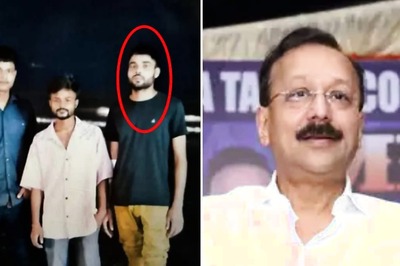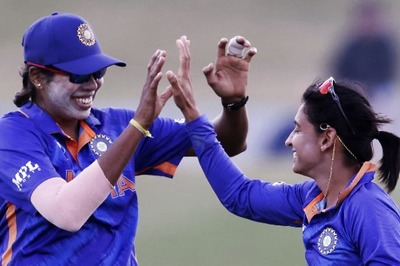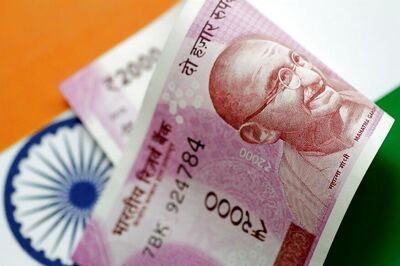
views
Forty-two assembly constituencies in the Jungle Mahal region of West Bengal hold the key for the electoral success of the two major contestants – the ruling Trinamool Congress (TMC) and its arch rival Bharatiya Janata Party (BJP) – in the upcoming state assembly elections beginning March 27.
The success of either of the two contenders in seizing the West Bengal throne will largely depend on the polling trend of the Kudmis and the preponderant tribal population of this region, which has been under the influence of the ultra-Left outfits till a decade ago.
The region on the south-western part of West Bengal along with contiguous areas of Jharkhand and Bihar has been the bastion of the Communist Party of India (Maoist), a militant outfit, and hotbed of one of the major movements between 2008 and 2011 against forcible land acquisition and the rampant system of usury.
However, it has witnessed several shades of political ideologies in the past few decades – from tricolour of the Congress to Red of the Maoists and then to green and white of the TMC. Now, the saffron of the BJP appears to be making inroads into this region.
In the last panchayat elections, several independent candidates from the tribal community defeated the official nominees of the mainstream political parties in various gram panchayats. The TMC and Left parties’ nominees were forced to bite the dust while the BJP won more than a third of gram panchayat seats in Purulia and Jhargram districts.
Sensing the anger of the tribesmen, the TMC fielded a Santhal woman in the last parliamentary elections in the Jhargram seat, which is the epicenter of the Jungle Mahal region. The saffron party, however, defeated the TMC and won the 2019 Lok Sabha election by a good margin of votes.
The BJP’s gain in the region can be attributed to the active role of the Rashtriya Swayamsevak Sangh (RSS) in the tribal region of Bengal, Jharkhand, Odisha and Chhattisgarh through its Saraswati Shishu Mandir schools and other social initiatives. Jhargram has a Vanvasi Kalyan Kendra besides a network of Ekal Vidyalayas.
The RSS has also been fighting the ultra-Left outfits as well as opposing the spread of Christian institutions. In early 2018, the West Bengal government had shut down over 120 Shushu Mandirs and ordered to close 350 more such schools run by the RSS. However, it turned out to be counterproductive, giving an edge to the BJP in this area.
The Jungle Mahal region comprises four districts of Purulia, Jhargram, Paschim Medinipur and Bankura and accounts for six Lok Sabha and 42 assembly seats in the 294-member West Bengal Assembly. Of the six Lok Sabha seats, the BJP won four seats — Jhargram, Purulia, Medinipur and Bankura — while Ghatal and Bishnupur were won by the Trinamool Congress in the 2019 general elections.
After the fall of the Left front government and emergence of the TMC brand of politics, an internecine fight between them paved the way for the spread of the BJP, which became discernible in the 2018 panchayat elections. In the 2016 assembly polls, the BJP had won only three seats in the state while the TMC had won 211 seats, Congress 44 and Left Front 33 seats. In 2019 Lok Sabha polls, the TMC won 22 out of the total 42 seats while the BJP won 18 seats.
As battle lines have been drawn, the major stake for the BJP in Jungle Mahal lies in the support of the Kudmis, who have not substantially voted for the BJP in the neighbouring Jharkhand. They are annoyed with the BJP due to the Citizenship Act as none of them have documents to prove their ancestry, especially those living in the dense forests. They are also livid over the refusal of the Centre to accord them the tribal status.
Both the TMC and the BJP are leaving no stone unturned to garner the support of the Kudmis, who have nearly 30 lakh-strong population and matter in about 30 of the 42 assembly constituencies in the Jungle Mahal region.
The BJP is highlighting ‘corruption’ by TMC satraps and also trying to cement the intra-party conflict among the local leaders. State BJP president Dilip Ghosh had recently visited the region to cement the differences among party cadres and leaders.
Mamata Banerjee has already inducted Chhatradhar Mahato, key functionary of the Lalgarh movement in 2008-09, and is desperately trying to reclaim her support among the Kudmis by once again recommending to the Centre their inclusion in the Scheduled Tribe list.
The Kudmis of Jharkhand and West Bengal are socially, culturally and ethnically different from the ‘Kurmis’ of Bihar. They observe totems and follow taboos akin to Munda, Ho, Kharia, Oraon and Santhals. A central government notification of 1913 and notification of the then Bihar-Orissa government of 1931 suggest that Kudmis were part of the Scheduled Tribes.
In the 1931 census, the Kudmis of Chotanagpur were included in the list of primitive tribes and it was a part of ST till September 5, 1950. The reason behind the omission of the caste from the list is not yet known. At the Adivasi Kudmi Convention held at Purulia on December 27, 1988, N E Horo in a written message stated that Kudmi community should be included into the ST list since they belonged to the ethnic group and remained part of it till 1931.
The Totemic Kudmi population is highly concentrated in Ranchi, Hazaribagh, Santhal Pargana and Chotanagpur plateau of Jharkhand, Mayurbhanj, Sundargarh, Keonjhar, Bonai in Odisha and Purulia, Bankura and Midnapore, Burdwan, Malda, Murshidabad and West Dinajpur in West Bengal. They have been traditionally settled in a well-defined territory bounded by four rivers Damodar, Kanshabati, Subarnarekha and Baitarani, which has been a part of lower Jharkhand.
While Mamata Banerjee’s ‘Maa, Maati, Manush’ mantra seems to be at odds with the ‘Jal, Jungle, Jameen’ slogan of the local tribal population, the Kudmi community remains non-committal, making the main contenders jittery before polls. In fact, the local people – tribal or non-tribal – are struggling to find a political route to achieve their goals.
Read all the Latest News, Breaking News and Coronavirus News here




















Comments
0 comment